5 Years Jain Spirit - A Non-Profit Quarterly Publication - 1999-2004
 5 years Jain Spirit magazine - A non-profit International Quarterly Publication - #19
5 years Jain Spirit magazine - A non-profit International Quarterly Publication - #19Sacred Spaces
Dr. L. M. Singhvi Continues His Pilgrimage Of Historic Temples
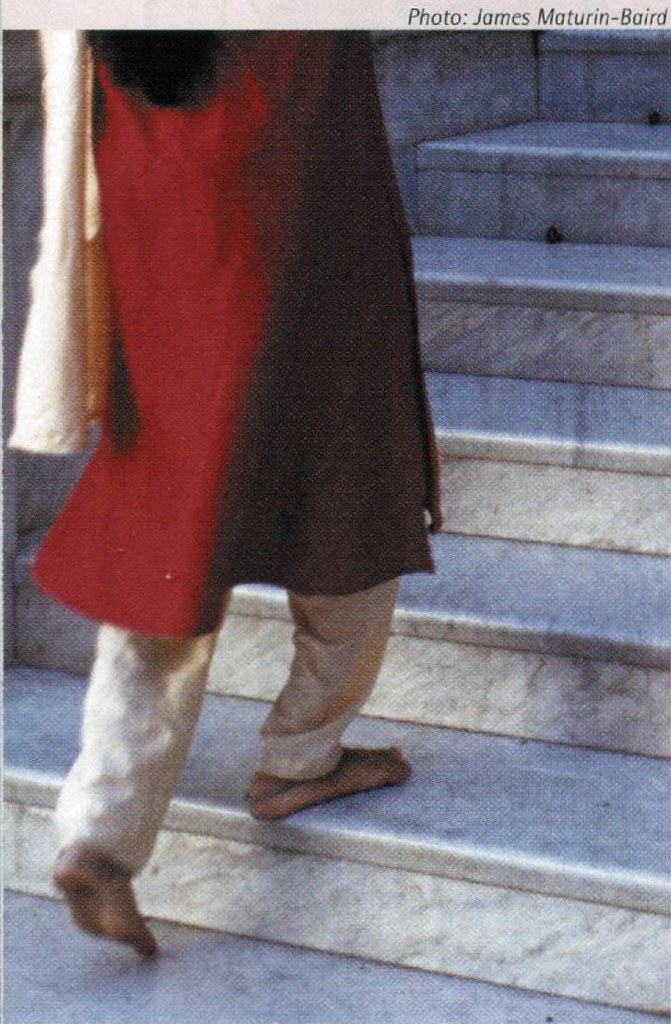 Jain Spirit #19, page 44-47: Sacred Spaces
Jain Spirit #19, page 44-47: Sacred Spaces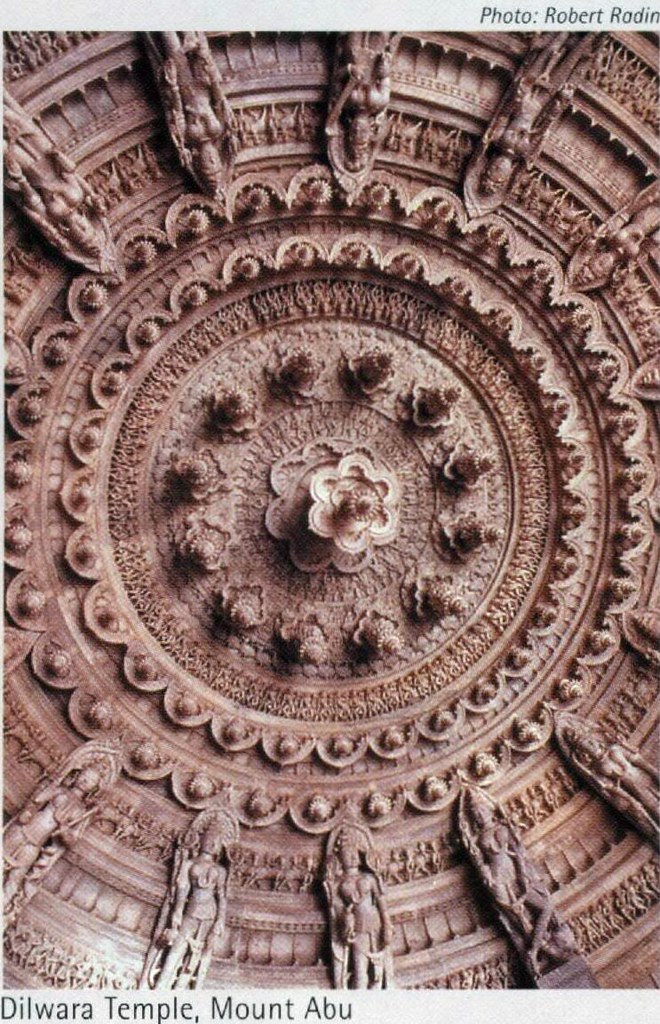 Jain Spirit #19, page 44-47: Sacred Spaces
Jain Spirit #19, page 44-47: Sacred Spaces Jain Spirit #19, page 44-47: Sacred Spaces
Jain Spirit #19, page 44-47: Sacred SpacesDILWARA TEMPLES, MOUNT ABU, RAJASTHAN
Mount Abu stands in Rajasthan's Sirohi district, and is considered one of the five holy hills of the Jains. According to an inscription dating back to 1370, Mahavir is believed to have visited here.
The Dilwara Temples, located near the village of Dilvaja on Mount Abu, are so captivating that a visitor would be content to spend a couple of days just admiring them.
The Tejapala temple, dedicated to Neminath, was built by Tejapala and Vastupala, the ministers of King Viradhavala, in the 12th century. The seated statue of Neminath in the sanctum sanctorum is sculptured in black basalt rock. Its consecration is believed to have taken place in 1230.
The Dilwara Temples, built in white marble, are designed in such a way that light and shade create a hypnotic ambience in all their corridors. Ornamentally detailed ceilings, pillars and panels seem to be carved to perfection. The main attractions here are the statues in both metal and stone, especially the
bronze image of Adinath. The surrounding wall is in grey stone. The niches of the temples contain white marble Saparikara images of Jain monks seated in the meditative posture. The Phanasana is composed of nine tiers and surmounted by a fluted bell. The bells also appear in the cardinal directions, but here they are accompanied by lions. The whole exterior is plastered in white lime.
RANAKPUR TEMPLE, RAJASTHAN
The tranquil pilgrim town of Ranakpur is famous for its marvelously carved Jain temples in amber stone. The central temple, enshrining the four-faced image of Adinath, was built by Dharna Shah, a minister of Rana Kumbha of Mewar (1433-68), and covers an area of 3,720 square metres. It took nearly 50 years to build the Ranakpur temple. Dharna Shah was greatly influenced by the sermons of a Jain monk, Somasundara, and he saw the plan of the temple in a dream. But no architect could transform his dream into a physical plan on paper. It took Dharna Shah years to find the architect who was able to pen down his dream. The astounding 29 halls are supported by 1,444 pillars, each with a distinct design. Along the corridor are carved images of the 24 Tirtahankaras. The temple has four small shrines with 420 columns supporting the 80 spires.
Facing the main temple are two other temples, one dedicated to Parsvanath and the other to Neminath. Pilgrims from all over the world visit the Adinath Temple every year to offer their prayers. The campus of the Ranakpur temple is also known as Adinath Vihar.
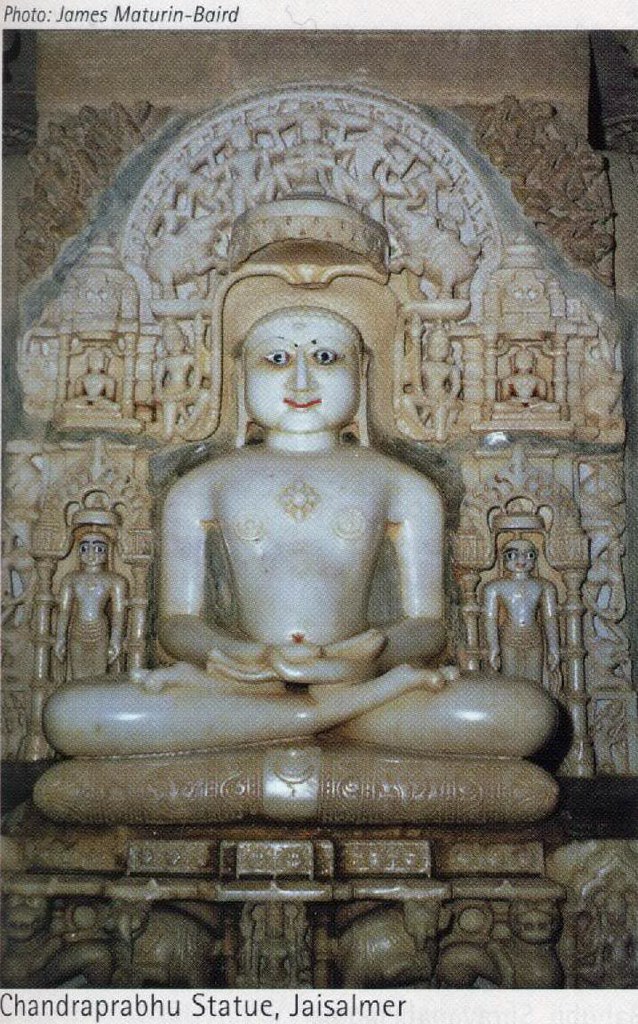 Jain Spirit #19, page 44-47: Sacred Spaces
Jain Spirit #19, page 44-47: Sacred Spaces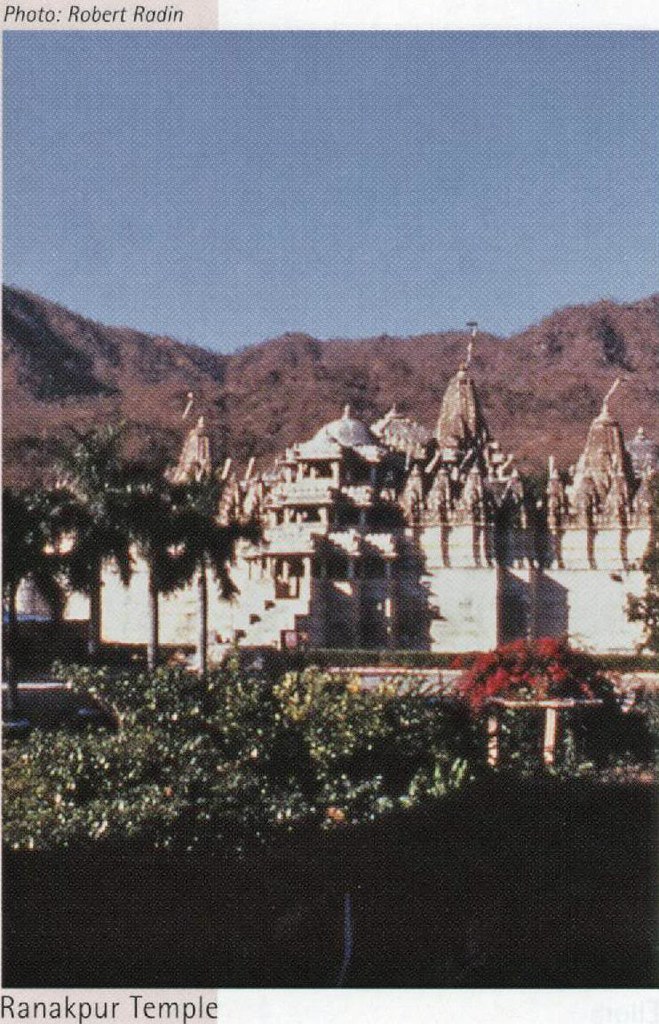 Jain Spirit #19, page 44-47: Sacred Spaces
Jain Spirit #19, page 44-47: Sacred Spaces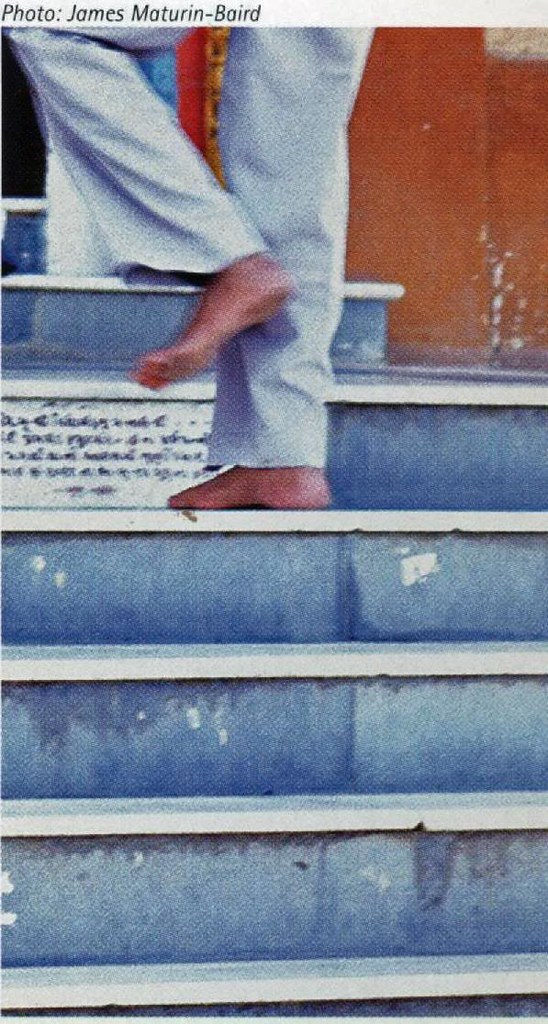 Jain Spirit #19, page 44-47: Sacred Spaces
Jain Spirit #19, page 44-47: Sacred SpacesSHRI KUMBHARIAJI, RAJASTHAN
This grand temple was built by Vimala Shah around 1050 AD. The main temple, the Vimala Vasahi, or Vimala Shah Temple, is flanked by four lesser temples, each with a unique design and distinct identity. The idols here are on a grand scale. The ceilings covered with fine craftsmanship, require close scrutiny to understand and appreciate the various events connected with the lives of the saints depicted there. This holy temple complex is situated 28 kilometres away from the famous shrines of Mount Abu.
The Jain temples of Kumbharia lie among the Aravalli Hills, on the gentle slope of a shallow river valley. There are six temples here, all located very close to each other. In its plan and design, the Parsvanath Temple comes midway between the Mahavir Temple and the Shantinath Temple. Neminath is the presiding deity seated in the padmasana (lotus) pose.
SHRI JAISALMER TIRTHA, RAJASTHAN
When Rana Jaisal founded the city of Jaisalmer and built the fort there, he also brought the statue of Chintamani from Londrawa to be placed in the temple within the fort. This statue has a pearl veneer, which gives it a special sheen. The cluster of temples here is known as a mini-Palitana and houses around 6,600 statues. The main temples inside the fort are dedicated to Parsvanath, Adinath, Shantinath, Sambhavanath and Mahavir. Inside the main temple is a very famous Bhairava statue. The yellow Jaisalmer stone and the fine craftsmanship in these temples give them a special aura.
The Jain libraries in Jaisalmer contain some very old and rare manuscripts, dating back about 800 years. There are also about 700 Tirthankara idols, seven libraries and rare palm leaf manuscripts to be found here.
 Jain Spirit #19, page 44-47: Sacred Spaces
Jain Spirit #19, page 44-47: Sacred Spaces Jain Spirit #19, page 44-47: Sacred Spaces
Jain Spirit #19, page 44-47: Sacred Spaces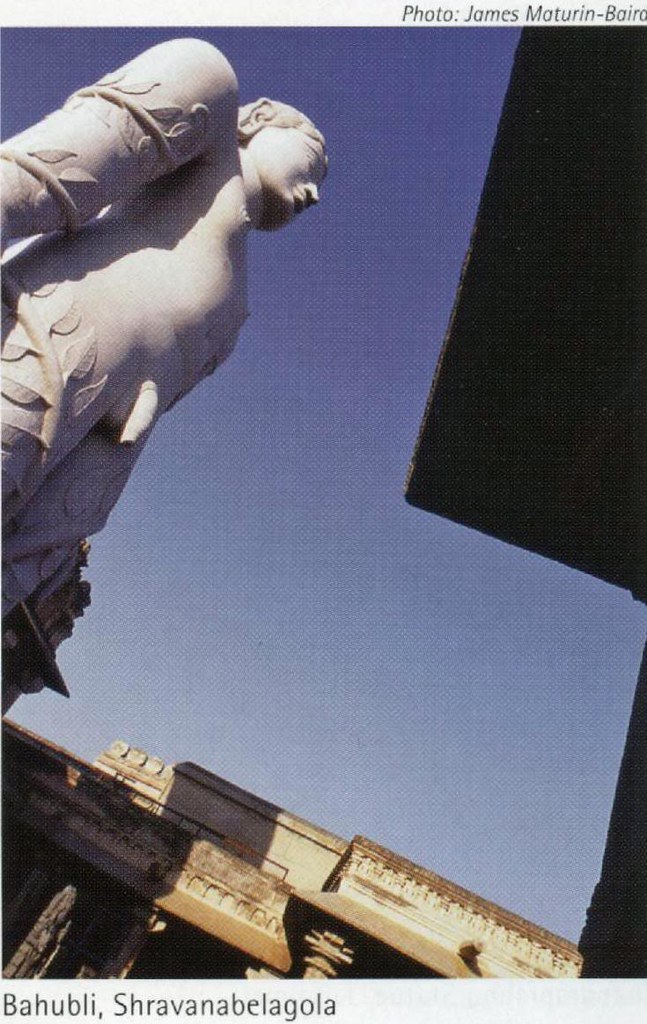 Jain Spirit #19, page 44-47: Sacred Spaces
Jain Spirit #19, page 44-47: Sacred SpacesSHRAVANA BELGOLA, ARNATAKA
In almost all the temples built by the Jains, the principal deity is a Tirthankara. It is only at Shravana Belgola, near Mysore, that one finds the rock-hewn statue of Bahubali, the younger brother of King Bharata and son of Adinath, the first Tirthankara, standing amidst the Vindhya hills and matching them in both size and grandeur.
In the Jain pantheon Bahubali, the first soul to attain moksha, is considered equal to any Tirthankara. His shrine at Shravana Belgola is one of the most revered of Jain pilgrimage centres. Tucked away in the serene calm of the large Indragiri hills and the smaller Chandragiri hills, the monolithic statue leaves the visitor spellbound. The crowds that throng Shravana Belgola during his mahamastakabhisheka ceremony bear testimony to this fact.
The 18-metre-high statue was built by Chamundaraya in 983 AD. Chamundaraya was a general of the Ganga dynasty, which was founded by a Digambara monk called Simhanandi around 265 BC. The statue stands nude in a yogic posture, the body in complete control and totally detached from the material world. The figure is no doubt human, but gives the impression of being part of eternity, an embodiment of pure spirituality.
An idol becomes sacred after it has undergone certain rites of consecration. Sage Kashyapa says in the Yajur Veda that the images of gods should be bathed every day before they are worshipped. But the Bahubali statue is so colossal that it is impossible to perform this ritual daily, therefore only its feet are bathed every day. The full bath ceremony, called the mahamastakabhishekha, is performed when the configuration of beneficial planets are at their most auspicious, once every 12 or 15 years.
ELLORA. MAHARASHTRA
The 34 cave temples at Ellora express Hindu, Buddhist and Jain themes. The Jain eaves, 30 to 34, were built from the 8th to 13th century AD and marked the last phase of activity at Ellora. Cave 32 houses a beautiful shrine adorned with fine carvings of a lotus flower on the roof, and a yakshi on a lion under a mango tree.
The two most noteworthy excavations in Ellora are Indrasabha and Jagannathasabha. Indrasabha is a two-storey shrine cut into the rock to a depth of over 200 feet. The upper storey of the Indrasabha is considered to be the most exquisite in Ellora.
The Jagannathasabha is smaller. It has a well-proportioned Jain arch, the torana. The pillars are carved in an ornate style. On the top of the hill is a 16-feet-high rock-hewn statue of Parsvanath. The plan of the Ellora caves is such that you have to pass through numerous Buddhist and Hindu temples to get to the one that houses the image of Parsvanath. This temple is called Parsvanath on the Hills.
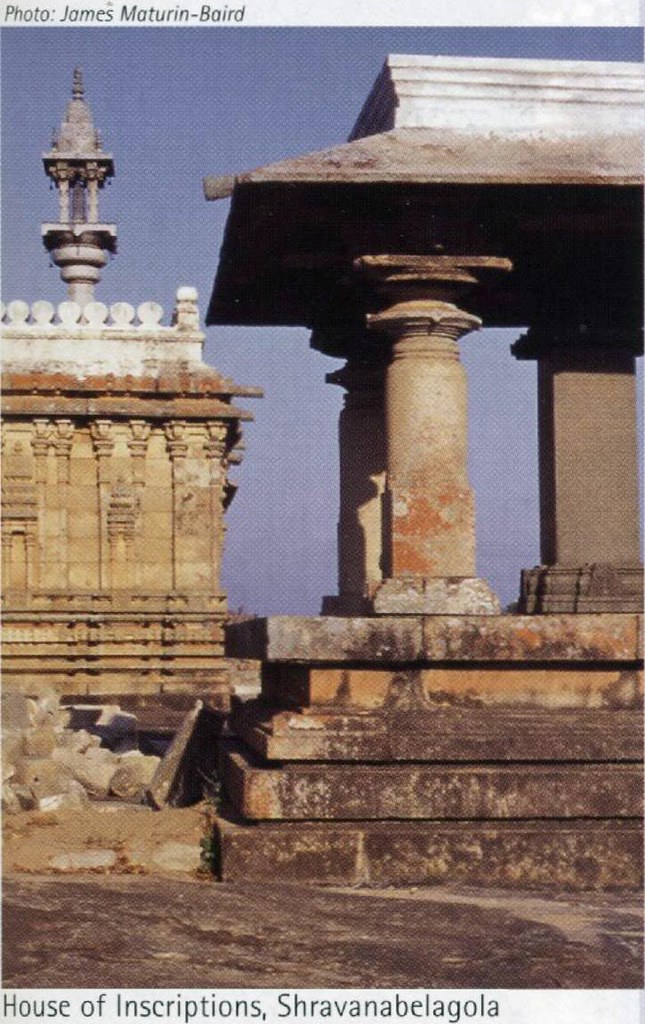 Jain Spirit #19, page 44-47: Sacred Spaces
Jain Spirit #19, page 44-47: Sacred Spaces Jain Spirit #19, page 44-47: Sacred Spaces
Jain Spirit #19, page 44-47: Sacred Spaces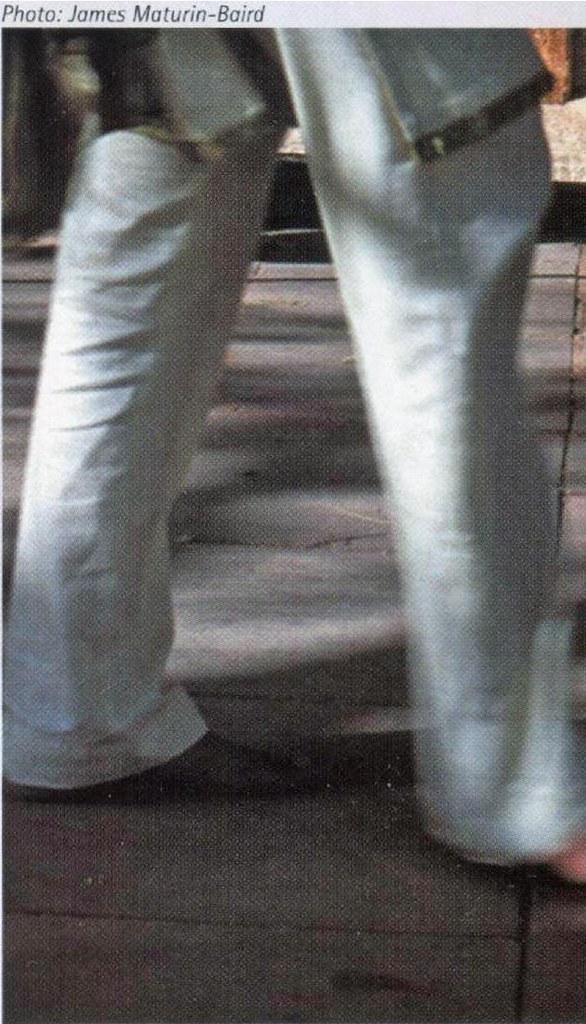 Jain Spirit #19, page 44-47: Sacred Spaces
Jain Spirit #19, page 44-47: Sacred SpacesKHAJURAHO. MADHYA PRADESH
Nine kilometres from the village of Khajuraho, on the banks of the River Khudar, stands a cluster of temples built by the kings of the Chandela dynasty between the 10th and 12th centuries. Of the 85 temples that have been recorded by various travellers, only 22 remain and are divided into Western, Eastern and Southern groups of temples. The three Jain temples: Parsvanath, Ghantai and Adinath, all belong to the Eastern Group. The Parsvanath temple is one of the finest at Khajuraho, representing some unique images from the Hindu and Jain pantheon. Originally dedicated to Adinath, later a black image of Parsvanatn was also sanctified - the only temple with two altars.
Dr. L. M. Singhvi was the former Indian High Commissioner to UK. The above article is extracted from 'Jain Temples in India and Around the World', Himalayan Books, 2002.
 Laxmi Mall Singhvi
Laxmi Mall Singhvi